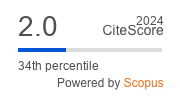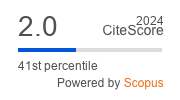| 2/2025 - 5 |
Enhanced Robust Control of Induction Motor Using Combined Optimal Model Predictive Control With Super-Twisting AlgorithmREZGUI, S.-E. |
| Extra paper information in |
| Click to see author's profile in |
| Not available online | Downloads: 0 | Views: 11 |
Author keywords
induction motor, predictive control, robust control, sliding mode control, variable speed drives
References keywords
image(31), encryption(29), chaotic(14), scheme(9), algorithm(9), applications(8), tools(6), multimedia(6), coding(6), sensing(5)
Blue keywords are present in both the references section and the paper title.
About this article
Date of Publication: 2025-06-30
Volume 25, Issue 2, Year 2025, On page(s): 37 - 48
ISSN: 1582-7445, e-ISSN: 1844-7600
Digital Object Identifier: 10.4316/AECE.2025.02005
Abstract
This paper presents a novel strategy for induction motor control that combines Optimal Model Predictive Control (OMPC) with the Super-Twisting Algorithm (STA) to enhance the performance of field-oriented control (IFOC) strategy under disturbances and uncertainties. OMPC is exploited for its capability to optimally handle multivariable systems with constraints, but suffers from high computational demands, sensitivity to model inaccuracies, and limited robustness against disturbances. To address these limitations, the proposed approach integrates STA, a second-order sliding mode technique, which provides robustness when subjected to model mismatch and disturbances, while reducing the chattering effect typically associated with classical sliding mode control. By incorporating OMPC with STA into the speed and currents loops of the IFOC technique, the system gains enhanced robustness and disturbance rejection capabilities, without increasing computational cost making it viable for real-time applications in complex control scenarios. This synergetic approach ensures stable and efficient performance in the face of internal variations (like parameters variation) and external perturbations (variable references and load torque). Simulation results demonstrate that the combined OMPC-STA strategy outperforms traditional PI and SMC methods in terms of tracking accuracy, robustness, providing a more reliable control solution for high-performance drives. |
| References | | | Cited By |
Information from Web of Science® will be displayed on the next page reload.
We were unable to retrieve information about this paper in SCOPUS®.
Message: [Returned results: 0]
There are no citing papers in the CrossRef Cited-by Linking system.
Disclaimer: All information displayed above was retrieved by using remote connections to respective databases. For the best user experience, we update all data by using background processes, and use caches in order to reduce the load on the servers we retrieve the information from. As we have no control on the availability of the database servers and sometimes the Internet connectivity may be affected, we do not guarantee the information is correct or complete. For the most accurate data, please always consult the database sites directly. Some external links require authentication or an institutional subscription.
Web of Science® is a registered trademark of Clarivate Analytics, Scopus® is a registered trademark of Elsevier B.V., other product names, company names, brand names, trademarks and logos are the property of their respective owners.
Faculty of Electrical Engineering and Computer Science
Stefan cel Mare University of Suceava, Romania
All rights reserved: Advances in Electrical and Computer Engineering is a registered trademark of the Stefan cel Mare University of Suceava. No part of this publication may be reproduced, stored in a retrieval system, photocopied, recorded or archived, without the written permission from the Editor. When authors submit their papers for publication, they agree that the copyright for their article be transferred to the Faculty of Electrical Engineering and Computer Science, Stefan cel Mare University of Suceava, Romania, if and only if the articles are accepted for publication. The copyright covers the exclusive rights to reproduce and distribute the article, including reprints and translations.
Permission for other use: The copyright owner's consent does not extend to copying for general distribution, for promotion, for creating new works, or for resale. Specific written permission must be obtained from the Editor for such copying. Direct linking to files hosted on this website is strictly prohibited.
Disclaimer: Whilst every effort is made by the publishers and editorial board to see that no inaccurate or misleading data, opinions or statements appear in this journal, they wish to make it clear that all information and opinions formulated in the articles, as well as linguistic accuracy, are the sole responsibility of the author.



